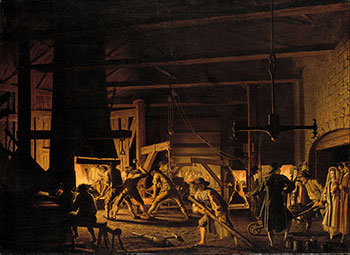"enterprise IoT" entries

How the IoT will transform manufacturing
The products of the future will impact not just factories, but all aspects of business.
Register now for Solid Amsterdam, October 28, 2015, where Dirk Slama will present the session “Managing the ‘Clash of Two Worlds’ in the IoT.” Editor’s note: this post is an excerpt from “Enterprise IoT: Strategies and Best Practices for Connected Products and Services,” by Dirk Slama, Frank Puhlmann, Jim Morrish, and Rishi M. Bhatnagar.
 In some cases, a distinction is made between the industrial IoT and the consumer IoT. But when we talk about “Enterprise IoT,” our focus is less about specific application domains and more about openness and integration maturity.
In some cases, a distinction is made between the industrial IoT and the consumer IoT. But when we talk about “Enterprise IoT,” our focus is less about specific application domains and more about openness and integration maturity.
Here, we will take a closer look at some of the more industrial applications of Enterprise IoT, starting with a discussion about how IoT will transform manufacturing from the perspective of both product engineering and production technology.
Integrated production for integrated products
We believe that the IoT will have two main areas of impact on the current manufacturing landscape. The first concerns the organizational structure that is required to produce truly integrated IoT solutions. The IoT involves a clash between two worlds in which those in the machine camp and those in the Internet camp will be required to work together to create products that combine physical products with Internet-based application services. In an IoT world, many companies will discover that being just a manufacturing company or just an Internet company will no longer be sufficient; they will need to become both — or become subsumed in an ecosystem in which they play a smaller role. Read more…

Smart building: Building bridges between IT and facilities
Building organizational bridges across the enterprise is critical to ensure successful IoT deployments.
With the proliferation of IoT-enabled systems and devices across the physical environment, the IoT is already embedded in the enterprise, often deep inside the industrial infrastructure. Generating terabytes of data, sensor-laden objects — lighting, HVAC systems, thermostats, beacons, and others — justify their cost based on the business benefits alone. Whether for energy savings, process efficiency, worker tracking, threat detection, or other purposes, facilities engineering teams are procuring these sensors and systems to address business needs. The challenge? Buildings are getting smarter without explicit or intentional involvement from IT, creating missed opportunities to leverage these assets and their data, and to align with a broader IT strategy.
While IT focuses on the computing and network infrastructure rather than the physical environment, facilities teams are deploying a new layer of smart devices across the infrastructure, without thinking that these objects are actually a series of data-generating nodes on the corporate network. To extract maximum value from these new, smart, networked devices, organizations need to redefine the historically challenged relationship between facilities and IT teams. While facility managers handle everything from plant operations, HVAC systems, maintenance teams, and snow removal, they are now also a new customer or partner for IT as buildings become instrumented. IT teams are subject matter experts and strategic partners that can ensure technology acquisitions within the physical environment will integrate with the other systems across the enterprise.
In fact, for the deployment of IoT technologies across the enterprise, there are obvious questions that IT is particularly well suited to address: Read more…
